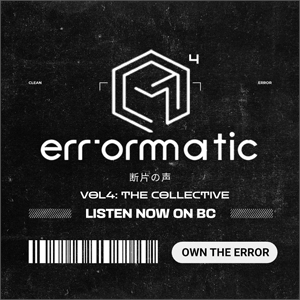“…So we’re constantly trying to do those strange little bits that wouldn’t normally be thought of as a track, and make them into a track. Like the bits at the end of records, or the bits at the beginning of records…” (Mark Fell of SND)
::..:::…..:..::….:::::..:::..:::::::……:::…::.:::….::::..:..:::…::…….:::::
Igloo: Were you happy with the gig?
Mat: Intially yeah I was happy with it, ‘cos I enjoyed it and for me it sounded OK. But talking back to people it sounded like it sounded pretty bad. When we soundchecked, the sound for me was really terrible at that point. So when we went back on stage and played, I could hear everything OK, so I was quite happy with it.
Mark: Yeah, I just couldn’t, it sounded really wierd to me, and if you moved back slightly the whole sound just disappeared. You couldn’t really hear the monitors. It always difficult in space like that, to provide the right kind of sound. That kind of PA isn’t really suitable for what we do, you need something more specialist for that kind of room.
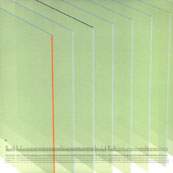
Mat: Maybe the room would be good, if you had the right system in it.
Mark: The right system and a bit of acoustic treatment it would be allright.
Igloo: When I first heard the music you make I hadn’t ever heard anything like it. How did you start?
Mark: The first thing we did was a 12″ on our own label. We didn’t expect anyone to like it, we didn’t expect to sell any. But we kind of said that if we can do three or four singles of this kind of stuff, doesn’t matter if no-one likes it, we’d know… so we did the first one, we had a really clear idea of what we wanted, didn’t we?
Mat: We actually got together and discussed what we wanted to do and stuff, you know ñ boundaries, so we both knew what we were talking about.
Mark: And we were saying, we want a bit of this, a bit of that, and a bit of that kind of stuff. And we did this 12″ and it sold out, almost immidiately. Achim from Mille Plateaux phoned us up and asked, “..Do you want a do an LP, a CD?” and we kind of said “Well, yeah. OK.” So that’s how we did it.
Igloo: Were you influenced by Oval or that kind of stuff?
Mark: It’s funny, but in retrospect looking back on what Oval was doing (I do like it), but at the time I didn’t like it. And whenever somebody said, “Yeah, you sound a bit like Oval” I thought, we don’t sound anything like Oval, to me. The references were a lot more to house music and techno.
Mat: I certainly wasn’t listening to Oval at the time.
Mark: I mean, we were aware of Oval. But at the time I was listening to Brinkmann, Mike InkÖ
Mat: Matthew Herbert.
Mark: Just a lot of abstract stuff as well. So we kind of found that a bit strange.
Igloo: On the Travelog 12″ some of the cuts are so deep my stylus keep skipping. Was that intentional?
Mark: No, it wasn’t.
Mat: No…
Mark: We always have difficulty cutting our stuff onto vinyl. When we cut that, –“where did we do that, Abbey Road?”
Mat: Abbey Road Studios.
Mark: In England. Which is like a pretty… you know Abbey Road, where the Beatles recorded… and I don’t think the engineer really… could…
Mat: A lot of engineers, they just think that we’re doing some sort of dance music and want the bass turned up, when really we just want an accurate representation. We have terrible trouble getting things back on vinyl.
Mark: The best place was that place in Camden. Camden Exchange.
Mat: The Exchange.
Mark: Yeah, that’s brilliant.
Mat: We did our first album there. The thing is, like, whenever we listen to any of our stuff apart from where we make it, it always sounds wierd.
Mark: It’s so much like listening to your own voice when it’s recorded. When we hear it on our speakers, it’s kind of like the way you hear your own voice in your head. Then when you hear it recorded and played back to you elsewhere, it’s like “that’s not my voice.” It’s that exact feeling, when you hear your music played elsewhere.
Mat: Playing live as well is like a really surreal experience, and getting something back on vinyl is like taken out of, a completely different context, it changes it all together, you know.
Igloo: So where do you stand in the vinyl vs CD debate?
Mat: When we first started, I was like, I’ll never release anything on CD and not on vinyl, it has to be on vinyl as well. But I think there are some things that we’ve done that would sound great on CD.
Mark: But the thing is, to put something on vinyl gives it a kind of credibility, and an image… that if you’re doing something quite abstract and you put it on vinyl, there’s a whole vibe about it it that really good, whereas if you put it on CD it’s like “oh, here’s another abstract CD.” Know what I mean? So vinyl’s got this kind of…
Mat: Puts it in a different context.
Mark: Gives it a kind of authenticity.
Igloo: Whose idea was it to do the locked grooves on the City Centre Offices SND 7″ (Systems Medley)?
Mark: It was both of us. We talked about it.

Mat: We had the opportunity.
Mark: I said, “We ought to do nine and call it The Planets.” But they never put the name on, so the side with the locked grooves are nine of them, and they’re called The Planets.
Mat: I think on the label it just says 8 locked grooves or something.
Mark: And there’s nine.
Mat: There was a mistake.
Mark: With that locked grooves thing it’s almost as if it is one track, split into nine different tracks.
Mat: It seemed to make sense with the way we work, the locked grooves thing.
Igloo: It seemed to me you got a bit more melodic with the last LP.
Mark: Well, I don’t know, actually, because when we started out, there was lots of melodic stuff going on. It’s just the first LP for Mille Plateaux didn’t have that. So it’s not as if though we went melodic, the second LP was more like the stuff we were doing…
Mat: …on the first 12″ there was melodies and stuff…there was lots of bells and chords and things… We just mixed them off the first Mille Plateaux LP for some reason. But it’s always been quite a big part of our formula, the little twinkly bits.
Mat: There’s some stuff like the Blir stuff is a bit darker, I suppose. We’re into doing that as well, really.
Igloo: I didn’t recognize any of the stuff you played live. Was it all new stuff?
Mark: It was all new. We just did it in the past six or seven weeks, just for this situation. It’s all new, and it’s all done just for live. And it’s all our performance systems. It’s a system we built and we can change it in any way we want. That was the main consideration, “How can we change this track?” And then we just implemented that.
Igloo: So did you build a new concept of how you do tracks, just for the live stuff?
Mark: Yeah, it is quite new to us, because what we’ve been able to do in the past are the kind of linear tracks that starts in a certain way, and you can work out what happens and when. Whereas this is a system, it’s not a linear piece of software, it’s a system where you can say “when you press this button, these things can happen, when you move this sliders, these things can happen.” We’re manipulating patterns. Which you can’t do in normal sequencers.
Igloo: Are you going to do albums with this kind of method?
Mark: I think we will do, yeah. We’ve got a lot more stuff that didn’t make it to the live set.
Mat: It went really well when we were developing, it turned into a really good system.
Mark: So we’ve got a lot of new stuff now. It’s a good progression for us as well, because we started off having really fixed patterns and manipulating sound, and now we’re doing stuff where we’re manipulating patterns. There was a bit last night where we’re morphing between two beats, and in the middle you just get this “dhuu dhuuo” sort of thing. It’s nice just to explore that thing.
Mat: I think it is a natural progression for the way we work, it’s makes everything much more freer.
Igloo: Who does the covers for your albums?
Mark: Both of us.
Igloo: Are the lines supposed to represent the music?
Mat: I don’t know, really, it’s just kind of warped into it over time.
Mark: Just before we did the first Mille Plateaux artwork I got a book on information graphics and typography and stuff, and there was some kind of chart in there, and we copied that, and developed it, and changed it. And manipulated it. It seemed to work. The second thing on Mille Plateaux, the more colourful one, that’s actually taken from the very first 12″ we did, which is just kind of like black and grey lines, and we took those and made them into three-dimensional shapes and then gave them colour and stuff. We just like the idea of doing that, taking the very first thing, and giving it depth and colour.
Igloo: That sleeve was rather similar to the Kid606 sleeve…
Mat: That was just a coincidence.
Mark: We were surprised when we saw it, but it was pure coincidence.
Igloo: I was surprised by the kind of superstar reception Kid606 got from the audience.
Mark: I think that’s down to the kind of music he does. I mean, we do music that’s…
Mat: …never going to get a reaction like that.
Mark: We wouldn’t want a reaction like that. We’re quite critical in terms of… We’re into things like dance music, house music, techno… But we just don’t want to do normal house music. We actually want to challenge the conventions and see if we can make something new. When any kind of artform evolves, there’s the kind of wierd edges that don’t seem to make much sense. And then gradually they almost seem to make sense. It’s like, in house music, one of the first things that happened was that we took the breakbeat out of jazz and turned that into the basic bits of the songs. The bits were they go mad are originally just little bits, and then they become the entire thing. So we’re constantly trying to do those strange little bits that wouldn’t normally be thought of as a track, and make them into a track. Like the bits at the end of records, or the bits at the beginning of records, for us, those become the records. The breaks in between, where something breaks down in the narrative, that would in tradition just be a little breakdown, but we want that to be the entire thing.
Igloo: Yeah, I’ve often thought those bits are the most interesting bits of the whole thing.
Mark: They are the most challenging bits, and if you look at them musically they’re really interesting. It’s like, if you look at philosophy, or literature, it’s the unintentional bits that actually tell you a lot about what’s going on.

The stage at the Sonar Festival wasn’t cordoned off from the audience, and during the performance there was a lot of people taking photos and video footage of the band. Sometimes just a few centimeters (remember, this is in Spain) away. It was very strange.
Mat: Yeah, it was quite unsettling. I really don’t like to be photographed.
Mark: And the thing is, a lot of the stuff on the computers is quite confidential.
::..:::…..:..::….:::::..:::..:::::::……:::…::.:::….::::..:..:::…::…….:::::
Later, during the photo shoot for the interview:
::..:::…..:..::….:::::..:::..:::::::……:::…::.:::….::::..:..:::…::…….:::::
Igloo: You’re looking sort of glum…
Mark: Me?
Mat: Don’t print any photos of us where we’re laughing. You’ll ruin our image. [everybody laughs at this]
Igloo: This is actually a macro lens for really close photography.
Mark: Oh no.
Igloo: Not a good idea?
Mat: I don’t think so, no.
Mark: Keep the distance! [smiles]
::..:::…..:..::….:::::..:::..:::::::……:::…::.:::….::::..:..:::…::…….:::::
Mark is the one in the cap.
Words & pictures by Henrik Strömberg.







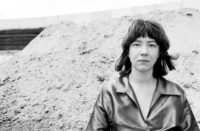
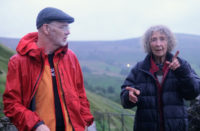


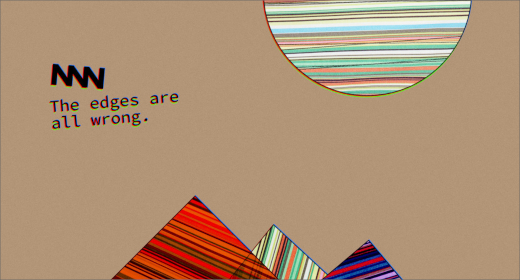

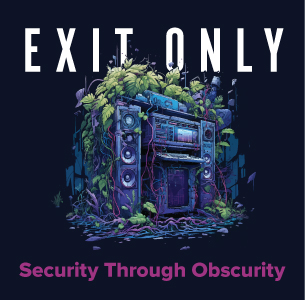


![V/A :: Errormatic Vol.4 [The Collective] (Clean Error)](https://igloomag.com/wp/wp-content/uploads/2024/12/errormatic-v4_feat-75x75.jpg)





